
Hi! Want to book a meeting, get an offer or ask a question?

Hi! Want to book a meeting, get an offer or ask a question?

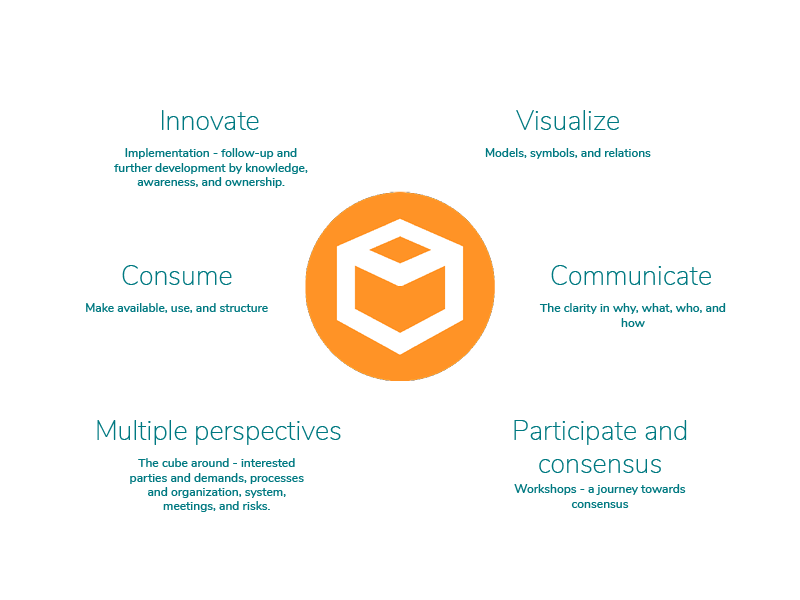
Models, symbols, and relations.
With the help of models, symbols, and relations we visualize the business. The need for visualizing is reoccurring in both creating an understanding of work, but also seeing the areas of responsibility, connections, and what resources are needed. We usually resemble the business with a cube, where each side of the cube has its own dimension. By turning the cube we can reach the different dimensions. On the different sides, there are for example interested parties, processes, and organization. Within the processes, we describe what we do, what resources are used and needed, what roles or positions perform or are responsible for the processes, and what requirements are set in the process. All this information can be traced to other parts of the business. For example, the roles and positions we visualize in the processes also belongs in the organizational part of the business, where we show the structure of responsibility. The requirements we visualize in the processes can be traced to the interested party- and relation models. In these models, we can gain a deeper understanding of the requirements put upon us.
The relations between the objects that are used to build up the models is the strength of 2c8. With the help of the relations and their connections, we can stop and see the details of the process, in order to easily move to another dimension.
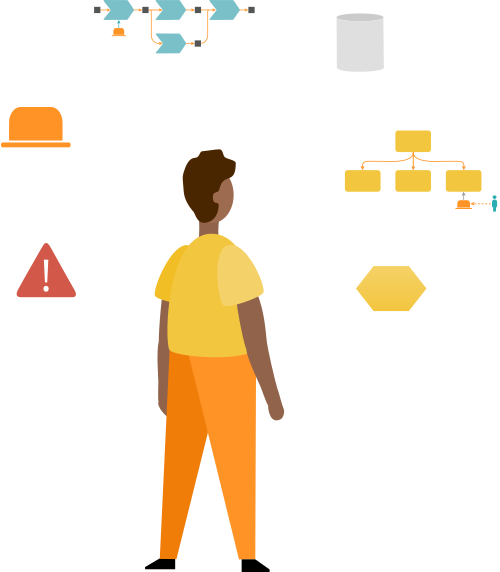
The clarity in why, what, who, and how.
Creating models gives us completely different opportunities for communicating something abstract and complex. The definition of visualizing something is to illustrate a complex and multidimensional context by human sight. This is exactly what we do when we map our business. Instead of abstract concepts and descriptions, we get a clear image of what the business, in theory, looks like. The models explain to us why we do as we do, who does what, and how we do it. By navigating the models, we can enter a more detailed level and gain a deeper understanding of how it is all connected.
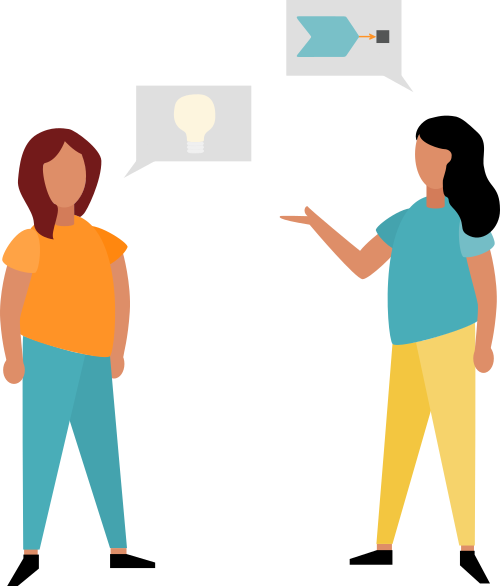
Workshops – a journey towards consensus
We have been advocating for working in workshops for a long time and 2c8 Apps is developed and adapted for it. Working together in workshops is, according to the 2c8 Method, a journey towards consensus and collaboration. Workshops are often effective and facilitate a space for coworkers to discuss and question the current way of working. Are we performing the work in the best way possible? Is this a correct image of the business? Are we considering the customer in the process? How can we streamline this step? All these questions and the overall competence put together does not only give a more anchored mapping but also contributes to identifying areas to improve. The value of the journey is as big as the final result.
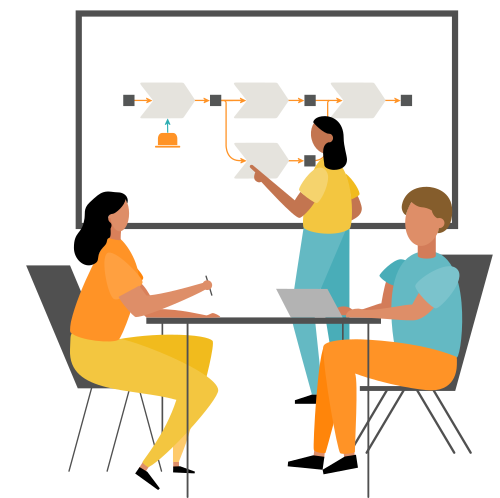
The cube around – interested parties and demands, processes and organization, system, meetings, and risks.
The cube is an important part of the 2c8 Method, and it helps us describe how we can navigate through the different perspectives and dimensions. From the process model, which is the first model we create, we show the requirements, roles and positions, IT-support, risks, and opportunities. Just as we mentioned earlier, these can all be traced to different perspectives, which will give us a deeper understanding. The roles and positions placed in the process are traced back to the organizational model. This means we can jump from the process to the organizational model, where employees can see all of their commitments in processes and meeting structures. From the process, you can, for example, also gain a deeper understanding of the IT-systems being handled in the processes by jumping to an application model. In the application model, you can see another dimension where employees responsible for systems receive more detailed information regarding the IT-systems.
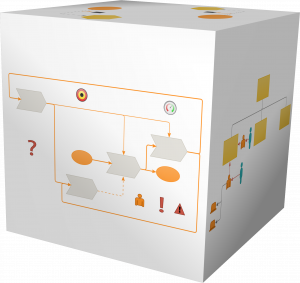
Make available, use, and structure
The models we create in 2c8 Apps are structured and you need no prior knowledge in order to understand them. You can easily make the models available on the web, where it’s easy to navigate and find information. The end-user can see information such as descriptions for certain activities, matrixes for illustrating responsibility, or lists of different applications within the business. In the published material, the end-user can see information that goes across multiple models, both overall and in detail. This contributes to a structure, in all parts of the business.

Implementation – follow-up and further development by knowledge, awareness, and ownership.
We see the ownership of processes as an important part of the business mapping. In order to go from version 1 to version 2, someone needs to be invested and eager to drive the development onwards. Innovation and improvement of the business is the momentum for modeling. By the visualization and consensus, we gain a clear image of where there is potential for improvement. By visualizing risks, problems, weaknesses, opportunities, and strengths within the processes, we create momentum to improve the business. This facilitates a focus on areas in need of more resources. Without ownership, continuity, and resources, there is no innovation. Structures are needed to handle improvement work in both the small changes and the bigger, more innovational and business-wide changes. The goal of all this is to reach better solutions and deliveries to our customers or interested parties.
